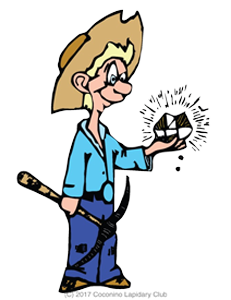We usually think of star sapphires and rubies as stones in the few carat range, not in hundreds and thousands of carats. But some are an amazing size. At the top, are the World’s Largest which are truly awesome. In this blog I’ll describe the worlds largest blue star sapphire, star ruby, and black star sapphire, as well as gems ranking near their size but just below the record. I’ll also include a short history of each gem.
Worlds Largest Blue Star Sapphire: The Star of Adam [Ref 1, Ref 2]
The world’s largest star sapphire weighs an amazing 1,4O4 carats, and when held, largely occupies the palm of a hand, as shown in Figure 1.

The stone was found in the fall of 2015 at mine in the famed alluvial gem deposits near Ratnapura, Sri Lanka [Ref 1 Ref 2]. At first sight, the owner estimated the value of the gem at $175 million. As of January 2016, the owner was pondering whether to auction the gem or to display it. A diligent trip over the internet disclosed no further information about any attempt to auction the gem. However, the gem may have been sold in a private transaction.
World’s Largest Black Star Sapphire: The Black Star of Queensland [Ref 3, Ref 4, Ref 5]
The Black Star of Queensland, as shown in Figure 2, weighs 733 carats, and was the world’s largest sapphire until being displaced by the Star of Adam. This gem is also seen to fill the palm of a hand but does not have the cabochon height of the Star of Adam.
Reportedly, the rough stone was found by a twelve-year old boy, Roy Spencer, in the mid-1930s, in the Reward Claim near Anakie, Queensland, Australia [Ref 3]. The boy’s father, Harry Spencer, assumed it was merely a black crystal and the family used it as a doorstop for over a decade. A second look disclosed the gem.
The stone was sold by Spencer in 1947 to the jeweler Harry Kazanjian for $18,000AU which funded a new house for the family. The subsequent history of the stone has been shared by owners and institutions. The gem was loaned to the Natural History Museum of the Smithsonian Institution in 1969. In 1971 it was seen around Cher’s on television show. To fulfill a childhood dream, the artist and jeweler, Jack Armstrong, and his wealthy girlfriend, Gabrielle Grohe, convinced the Kazanjian family to sell the gem in 2003 [Ref 4]. In 2010 [Ref 5], the pair squabbled over the stone and Armstrong agreed to pay $500,000 for Grohe’s share, but failed to pay, and due to a judge’s ruling he lost all right to the gemstone.

World’ Largest Star Ruby: the Appalachian Ruby Star [Ref 7]
The Appalachian Ruby Star weighs 139.43 carats and barely edges out the Rosser Reeves Star ruby, that weighs in at 138.72 carats, as shown in Figure 3. The Appalachian Star ruby was cut from a rough ruby, which also yielded three additional stones. The weight of the group of four star rubies became known as the Mountain Star Ruby Collection and is shown in Figure 4. The aggregate weight of the rubies totals 342 carats.
The rough ruby was found in 1990 by Wayne Messer, a fishing guide in Western North Carolina. He had noted traces of corundum in a stream bed and traced the alluvial stones back to their source. Upon digging some eight feet, found the rough ruby. The quartet of star rubies was cut by Sam Fore from the rough stone which weighed 377 carats.
The Appalachian Star ruby was exhibited in 1992 at the Natural history Museum in London, drawing an estimated 150,000 people. Several attempts were made over the years to sell the collection, appraised at a value close to $100 million. Only recently, following the death of Messer, was the collection offered for sale.


The Rosser Reeves Ruby [Ref 8, Ref 9]
At a weight of 138.7 carats, the Rosser Reeve Ruby is the world’s second heaviest star ruby, and was found in Sri Lanka. The gem is named after Rosser Reeves a pioneer in the advertising industry. Rosser donated the gem to the Smithsonian Institute in 1965. Despite his attractive tale of buying the gem at an auction in Istanbul, he actually bought the gem from Robert C. Nelson Jr. At purchase, the stone weighed just over 140 carats, but was scratched and so was re-polished, which also helped to re-center the star on the Cabochon. Fortunately for museum goers, this beautiful gem still can be seen at the Smithsonian institute. As a note, the Wikipedia article used as the reference for this segment of the blog was written by Brendan Reeves, great grandson of Rosser.

REFERENCES
Ref 2. https://www.mindat.org/loc-3147.html
Ref 3. https://en.wikipedia.org/wiki/Black_Star_of_Queensland#cite_note-5
Ref 4. https://www.upi.com/Feature-Legendary-sapphire-for-sale/10481044491153/
Ref 5. http://articles.latimes.com/2010/jan/05/local/la-me-blacksapphire5-2010jan05/2
Ref 6. https://www.pinterest.com/pin/863987509737025682/
Ref 8. https://en.wikipedia.org/wiki/Rosser_Reeves_Ruby
Ref 9. https://geogallery.si.edu/10002811/rosser-reeves-star-ruby
